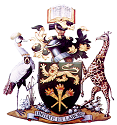The Moderating Effect of Top Management Support on Key Attributes to E-government Implementation Success in Developing Countries: A study of Ugandan Ministries
Abstract
This paper examined the role of top management support as a moderator on the model involving the relationships between user participation attributes, information system attributes and e-government implementation success. The data was collected through a survey of 277 employees from three Ministries (ICT, Finance and Works) in Uganda and was analysed using PLS-SEM aided by Smart PLS3. Using Stakeholder, UTAUT, and Information success theories, findings revealed that user participation attributes and information system attributes directly and positively affects e-government implementation success in Uganda. Furthermore, the moderation effect results signpost that top management support latent variable positively moderates the relationship between user participation attributes and e-government implementation success in Uganda. These findings contribute to literature related to the key attributes of e-government implementation success by incorporating the moderating role of top management support hence acting as a foundation for future researchers. Furthermore, the study has implications and recommendations to e-government policy maker, e-government practitioners, government Ministries of Uganda in particular and other developing countries with similar characteristics in general.
Keywords: Top Management Support, Key Attributes, E-government Implementation, Ugandan Ministries





